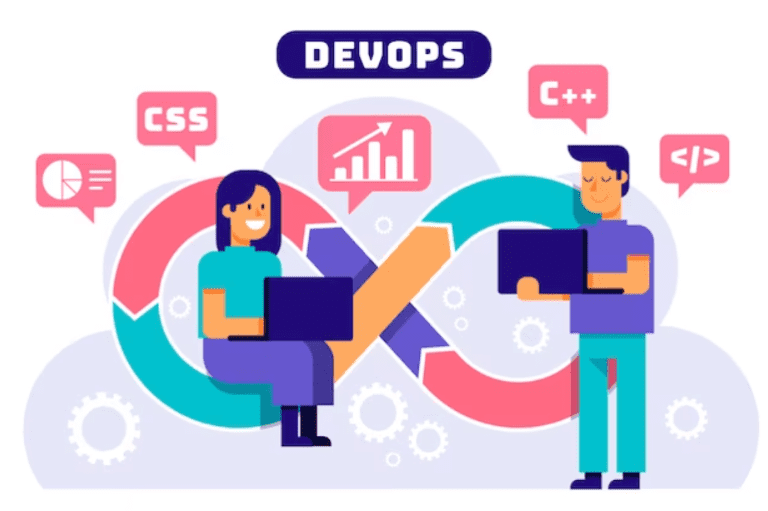Understanding Why Release Management Is So Important
In an era of tech-centric products, it becomes crucial to be on top of the game. Ship releases faster! But to reach any goal, the surrounding process needs to be spot on. The process and checks around shipping features faster are called “Release Management”.
“Release” in software engineering is the final product, and “management” is the software creation process.
“Release” is the final, working version of the product. Before its release, software often goes through multiple versions like alpha and beta versions. We call the releases associated with the alpha and beta versions alpha or beta releases.
Still, when used in the singular form, the term “release” typically denotes the ultimate and final version of the software. Launches and increments refer to a new software version.
In this article, we will discuss release management and its advantages, and last, we will discuss the extended DevOps platform.
What is the Release Management process?#

Visualize an organization full of skilled individuals who work hard to create and improve software. But how do they ensure that software is top-notch, delivered swiftly, and efficiently executed?
The secret lies in the art of release management. Release management forms the key to unlocking the success door in software development. The process is like a well-oiled machine, finely tuned to improve the quality, speed, and efficiency of building or updating software.
Focusing on release management helps increase software development and maintenance quality, speed, and efficiency. The software development life cycle (SDLC) includes many phases. A part of the life cycle is planning, scheduling, creating, testing, delivering, and supporting. Optimizations in release management result from agile, continuous delivery, DevOps, and release automation.
When discussing reliable and scalable DevOps as a service, you can focus more on providing value to your customer.
Recently, the pace at which we ship our releases has skyrocketed. For example, Amazon achieved a significant milestone by surpassing 50 million code deployments per year a few years ago. This translates to more than one deployment occurring every second.
Release management is an age-old practice, still prevailing and almost inevitable.
And you know what is fueling adoption and popularity? The incredible innovations that we see in technology.
The entire process is like watching a race, where new advancements are sprinting ahead, pushing release management to new heights. So buckle up and let's dive into this exhilarating journey!
Steps for a Successful Release Management Process#
There are many processes and checks closely linked to the rewarding release management process. Here, we will look at the process at a high level.
Feature/Bug Request:
As the first part of the process, the team evaluates every request, examining its feasibility and demand during the roadmap review. The roadmap is a document that maintains the features requested by customers, engineering, and sales teams. The team brainstorms creative ways to fulfill it by modifying the existing version.
This part is like solving a thrilling puzzle, where every piece holds the potential for innovation and improvement. If there is enough justification to include, the request is prioritized. The product and program teams approve the requests through the remaining cycle.
Plan:
Once the feature makes it to release, planning forms the backbone as it defines the structure of our work, leading to certainty and clarity. Planning becomes the secret weapon that empowers the release team to conquer any challenge that comes our way. During this process, we create a release branch from the existing code to ensure the correct change lands in the release branch. Release branches are gatekeepers. The work-in-progress features undergo approvals and make it into a working or production branch.
Design and Build:
Here, we translate the feature or the bug fix into computer code to fulfill the request. After that, the development team creates the release's blueprints and code. Once the code is in a ready format, we commit the code to the release branch. It calls for building and packaging for users to consume the new features. As a check, the development team runs through unit test cases to ensure nothing in the product breaks with the inclusion.
Testing:
Once satisfied with the quality, the team pushes the changes as a part of the ‘dev' release to a testing environment. After unit and integration tests, user acceptability testing (UAT) takes over. If we find issues during testing, we give the build back to the development team, so they fix it on reported issues before we test it again. This cycle repeats until the release is ready for production and has approval checks by the development team, the quality team, and the program owner.
Deployment:
Now comes publishing the approved version and making it available to the public in the live environment. The live production environment is a sanctuary. A working product can comfortably live here. Comfort for a software product includes CPU, memory, and storage. The deployment phase includes preparing release notes and training the existing users and business teams.
Post-Deployment:
Post-deployment, we document the bugs that always seem to find their way into our systems, leading to calls for modifications. Critical bugs found here will go through program review meetings to find their place in a patch of release or documentation.
Now is the time to ensure that everything runs smoothly and that our users have the best experience possible. Thus, the cycle starts over again.
What are the goals and advantages of implementing Release Management?#
Release management has significant benefits for an organization and the app development cycle. It leads to agility and better communication with protocols. It ensures the delivery of quality products in less time.

Reasons for implementing the software release management procedure:#
- Businesses can enhance the number of successful software releases.
- Release management plays a crucial role in minimizing quality issues and problems.
- Effective release management boosts collaboration, efficiency, and output.
- Release management allows businesses to unleash their software faster than ever before, all while keeping those pesky risks at bay.
- Release management helps streamline and standardize the development and operation processes. This fantastic benefit allows teams to learn from their experiences and use those lessons to conquer future projects.
- Collaboration between operating and development leads to fewer surprises and faster fixes.
- Release management connects IT teams, breaking down obstacles and aiding collaboration.
Release management in DevOps#
Integrating DevOps as a service with release management has many fruitful results.
Release management is an essential and valuable part of the software development process. While agile and DevOps focus on automation and decentralization, release management is still necessary.
To deliver quality products, a well-documented, consistent process becomes necessary. It includes coordination between teams, alignment of business goals and rigorously monitoring metrics.
Release and DevOps managers work in unison to ensure a seamless transition from new features into the release management process. They do this to increase customer value and quickly resolve any bugs or issues that may arise.
DevOps as a service platform helps you unlock a good deal of automation, reducing effort in management. Various tools can help with making release management a success.
Nife, as an extended DevOps platform, helps automate complex deployment workflows. It creates steady releases in under five minutes, leading to faster time-to-market.
Conclusion#
Every single stage of software release management holds immense significance. Well-established processes and fostering collaboration among teams and stakeholders can bring you various benefits.
With every step of the development cycle, we can keep our eyes on the prize. The goal, here, is to deliver high-quality software changes on time.
In the release process, it is crucial to consider every aspect and make sure that every member of the team agrees. Communication and tools become essential.
Software release management is compulsory to ensure smooth and successful project launches.
The extended DevOps platform Nife is revolutionizing software delivery and collaboration.
Don't miss out on the incredible benefits it brings to the table.



